#samodiva
Explore tagged Tumblr posts
Text

Samodiva – Now, that's a staple in Bulgarian mythology. They are described as beautiful young women who live in the mountains and use their magical abilities to help the common folk.
However, Samodivas have a fatal weakness - since their magic is contained in the veils they wear, they could potentially lose their magical abilities. Some legends revolve around Samodivas who lose their veils and sometimes find them back.
As mentioned, Samodivas are a core part of Bulgarian folklore. Because of that, truth be told, they have become victims to their popularity and, unfortunately, many stories that feature them also tend to fetishize them in some very questionable ways (applies to both ancient tales and modern interpretations).
I did my best to avoid getting influenced by the raunchier interpretations of these nymph-like women when drawing my own take on them.
#art#fantasy#illustration#artists on tumblr#ink#black and white#traditional art#traditional illustration#traditional drawing#bulgarian artist#bulgarian folklore#samodiva#българия#самодива#бг#бг художник
74 notes
·
View notes
Photo

[Image above: Vila by Andy Paciorek]
Legends and myths about trees
Legendary tree deities (19)
Samodiva – ‘Wild alone’, the Slavic tree nymph
The samodiva, samovila or vila, are woodland fairies or nymphs found in South and West Slavic folklore.
Thought they are predominantly associated with Balkan, specifically Bulgarian, folklore. Yet as there still Slavic, they can't be even semi friendly to people. It's the Slavic way. Samodivas are humanlike creatures, usually wearing a white cloak or dress and armed with a bow and arrow used to catch their human prey. The name ‘samodiva’ is formed by combining two separate words, ‘samo’ and ‘diva’. The former means ‘alone’, whilst the latter ‘wild’, or ‘divine’, hence the name literally means ‘wild alone’. The first part of the creature’s name signifies its avoidance of human beings, whereas the second indicates their wild or divine nature.
Samodivas are commonly depicted as ethereal maidens with long, loose hair, and in some cases, wings. They are typically dressed in free-flowing, feathered white gowns, which give them the power of flight. Samodivas are often described as having blonde or red hair, tall, slender women with pale, glowing skin and fiery eyes.
Sometimes, they are described as having a veil which could hold all their power. If they get deprived of their veil, they lose all their power. If they get deprived of their veil, they lose all their power.
The samodivi dwell in mountainous areas, and their favorite haunts include the Pirin, Vitosha, Rila, and Stara Planina Mountains. They enjoy riding on deer and use twisted snakes as reins. They are extremely protective of their mounts and would cast a spell on anyone who killed their deer, even if it was by accident. The spell would result in the person’s death. Most thair stories involving them are like that, though they enjoy dancing they often entice mortals to dance with them until said mortal die of exhaustion.
But, they are not always the bad, and sometimes they appear like normal working women and help with the harvest. They would especially help women with children and if a man did something good for a samodiva, she becomes his patron or a sworn sister. Sometimes, a samodiva can fall in love with a human and bear him children, who grow up to be great heroes. As they are forest creatures they know a lot about herbs and forest plant yet as they are not so keen on sharing their knowledge, you have to eavesdrop on their gatherings.

木にまつわる伝説・神話
伝説の樹木の神々 (19)
サモディーヴァ 〜 「野生で一人」、スラブの木の精
サモディーヴァ、サモビラ、ビラは、南・西スラブ民話に登場する森の妖精またはニンフである。
バルカン半島、特にブルガリアの民話に多く登場する。しかし、スラブ人である以上、半端に人に好意的であるはずがない。それがスラブ人のやり方なのだ。サモディーヴァは人間に似た生き物で、通常は白いマントやドレスを身にまとい、人間の獲物を捕らえるための弓矢で武装している。「サモディーヴァ」という名前は、「サモ」と「ディーヴァ」という2つの別々の単語を組み合わせて作られたものである。前者は「一人」、後者は「野生の」「神聖な」という意味であり、文字通り「野生で一人」という意味である。前者は人間を避け、後者は野性的、あるいは神々しいという意味である。
サモディーヴァは、長く緩やかな髪と、場合によっては翼を持つ、幽玄な乙女として描かれるのが一般的だ。サモディーヴァは、しばしば金髪か赤毛で、背が高く細身の女性で、青白く輝く肌と燃えるような目を持っていると表現さ れる。
時には、彼女たちのすべての力を秘めたベールを持っていると表現されることもある。もし、そのベールを奪われたら、すべての力を失ってしまう。
サモディーヴァは山岳地帯に生息し、ピリン、ヴィトシャ、リラ、スタラプラニナなどの山々を好む。彼らは鹿に乗るのが好きで、ねじれた蛇を手綱として使う。馬を非常に大切にし、たとえそれが偶然であったとしても、鹿を殺した者には呪文を唱える。その結果、その人は死んでしまう。ダンスが好きで、人間を誘い、その人間が疲れ果てて死んでしまうまで一緒に踊ることもある。
しかし、彼らは常に悪者ではない。時には、普通の働く女性のように現れて、収穫を手伝うこともある。特に子供のいる女性を助けることが多く、もし男性がサモディーヴァに何か良いことをすれば、彼女は彼の支持者や誓いの妹になる。時には、サモディーヴァが人間と恋に落ち、子供を産み、その子供が偉大な英雄に成長することもある。森の生き物である彼らは、ハーブや森の植物について多くのことを知っているが、その知識を共有することにあまり熱心ではないので、彼らの集まりを盗み聞きする必要がある。
#trees#tree legend#tree myth#samodiva#vila#slavic mythology#slavs#mythology#legend#folklore#tree nymph#wild alone#mountains#nature#art#forest creature
154 notes
·
View notes
Text
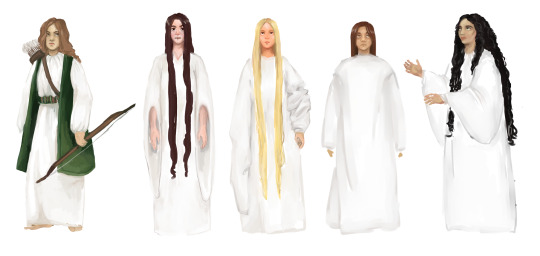
This sketch has been around since 2017 and I guess it will never be more finished than this.
A couple of samodivas, some things more true to traditional beliefs than others - I gave them different complexions to reflect Bulgarian women, whereas traditionally they are blonde-haired and black-eyed. Their powers are stored in their chemise, which is unornamented (embroidery is to protect mortals). The different sleeves are based on different 19th-century and medieval chemises from Bulgaria and neighbouring regions. In some beliefs they wear colourful (but mostly green) belts, and green zubuns (outer garments). They are also typically imagined to be archers, riding six-winged deers.
#bulgarian folklore#folklore#bulgarian mythology#balkan mythology#slavic mythology#slavic folklore#balkan folklore#balkan#slavic#samodivas#samodiva#самодиви#artists on tumblr#sketch
78 notes
·
View notes
Text
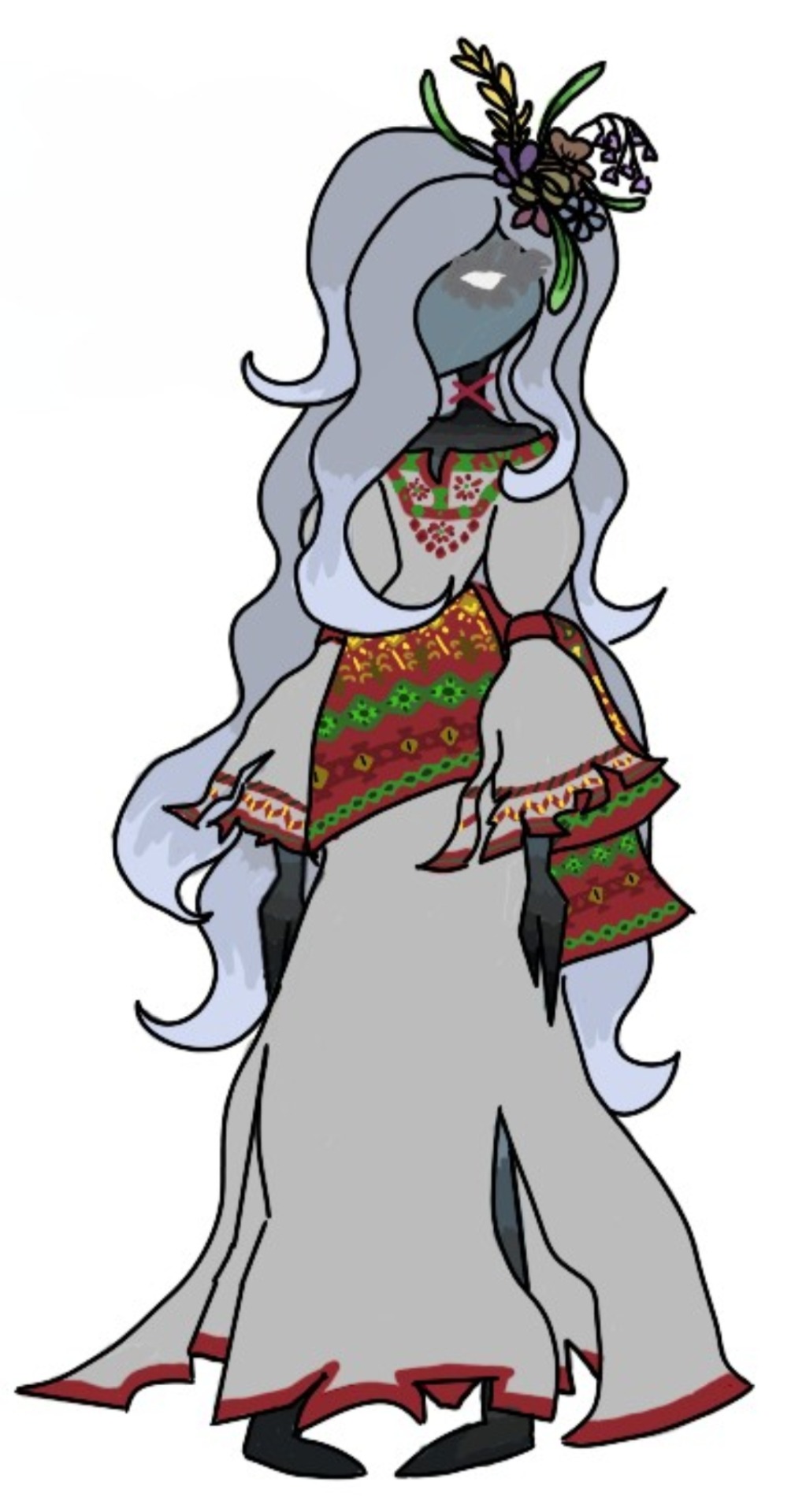
Hazbin Hotel oc? Kinda?
I just like the simple style of the show, and feel since there are like mummy and other kinds of monster-ish sinners it won't be far-fetched to say that a sinner could look like a monster from their culture. So, here is my samodiva design for the Hazbin Hotel vers! It would also work with the fact that every person there has a feature that they hate, so if someone was very afraid of water/lakes/drowning/mermaids/water spirits, it would be a great direction to go in
She isn't really perfected, but I'm working on my Genshin ocs and don't feel like working with them anymore, so for now, that's how she will look
(She/they pronounce if you refer to the character)
#hazbin hotel#hazbin oc#hazbin hotel oc#samodiva#bulgarian folklore#oc#oc design#water spirit#rusalka#???kinda#they are different#but also kinda the same#there is enough similarities for me#bulgaria#monster oc
7 notes
·
View notes
Text
SAMODIVA DANCING
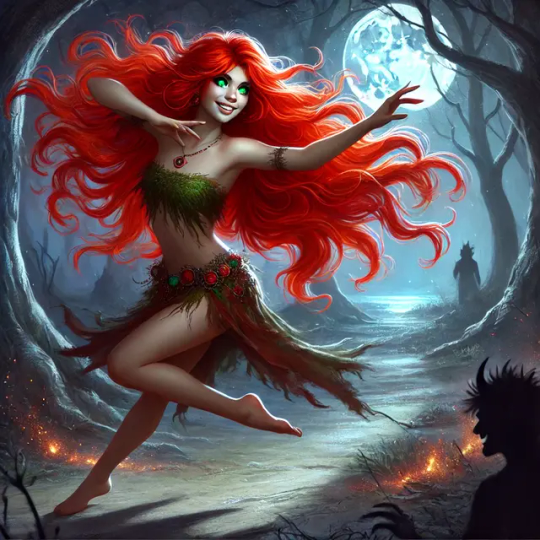
She knew the moment her feet touched the forest floor. The devil, cloaked in shadows— but she, oh, she, with fire in her veins, hair a wild blaze beneath the moon, saw the spark beneath his darkness.
A Samodiva, fierce and untamed, she danced with the wind, with the night, with the reckless heartbeat of the earth beneath her. She saw everything—and still, she chose to seek the light.
Why should she change? Her spirit, deep as the forest’s roots, could never be broken, never bent. She blazed, and even the devil, lost in her flame, felt his edges melt.
Oh, darling, when she dances, he is helpless— caught in the sway of her hips, the fierce grace of her limbs, her eyes daring him to follow. Every step, every twist is a spell, and he bends. He shatters. He follows.
She, with hair like flames alive,
eyes deep green mystic the forest self... whirls through the trees like firelight, bare feet kissing the earth, pulling him deeper into her wild. Each move, a spell unspoken— a promise that even the devil can grow.
It’s so simple.
Her laughter cracks like burning wood. Her touch, soft as moss, sharp enough to carve him open. She is flame, untamable, and with each twirl, he falls to his knees. The forest watches, shadows holding their breath.
And her final move— a pirouette, fierce and perfect, a flame flickering into the night. She leans in close— the kiss of a Samodiva, soft, yet heavy as fate.
Then she vanishes, melting back into the shadows of her ancient forest, the dark and the deep, her eternal home. The wind sighs as she leaves, the trees bend in reverence, and the devil? He stands alone, haunted by her touch, by the fire she left burning in his bones.
But she—oh, she, with her untamed blaze— will dance again. She always does.
#Samodiva#devil#dance#lovepoem#darkromance#unrequitedlove#forbiddenlove#witch#wild#untamed#poetry#darkfantasy#mythology#fairytale#romance#love#nature#forest#fire#magic
4 notes
·
View notes
Text
Samodiva
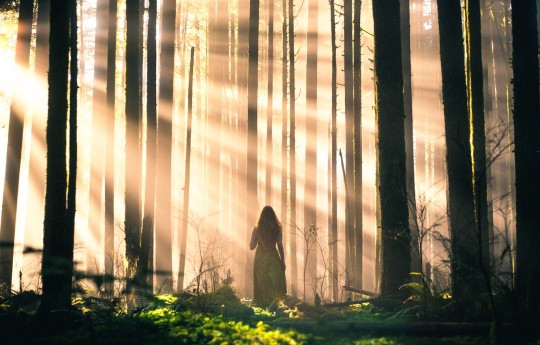
The samodiva (known also as samovila or vila; samodivi or samodivas in plural) is a creature found in Balkan, specifically Bulgarian, folklore. In general, these beings are forest spirits or wood nymphs who appear as beautiful young women. But things should not be taken by first appearances sometimes. Samodivi appear in many stories, in which they are harmful, or at least mischievous, creatures...
Samodiva: The Life-Sucking Temptress and Wood Nymph of Bulgarian Folklore
2 notes
·
View notes
Text
youtube
Pozor na to, koho beriete do tanca.
Be careful who you dance with.
1 note
·
View note
Text
Samodivi in Witches of the North
They are known to live in Northland and are independent healers who tend to temples around the kingdom. They used to be considered Sidds, but are not in fact Witches at all.
Samodiva sg. - Samodivi pl.
Characteristics
Their skin colors usually vary from teal to snow white, and their eyes are teal or white and very bright. Between each other, they speak in song and dance. To people who do not understand their speech, they tend to use common language, but usually in riddles or roundabout words. Their names are sung sounds, so outsiders often cannot call them by name or understand their names. They dress in free flowing white garments.
In older tales, it was believed that the Samodivi have a veil that contains all their power. In truth, that is a mistranslation, as their old word for hair and veil were very similar - this actually refers to their hair, which they never cut unless they need a bit of to heal a deathly wound of another Samodiva.
Culture
Samodivi are carefree, wild, love nature, and are Northland's magical healers (as opposed to the Vampires, who use scientific methods). They seem to live outside of time itself, never changing or aging, always dancing in a horo and singing in their own language. They accept anyone with good intentions who comes into the temples, but will become vicious if they perceive any threat. They can heal physical or emotional wounds in their pools, as well as alter or hide memories if asked.
While children between Samodivi and Witches are not unheard of, because of the Samodivi's nature and their strange perception of time, it is extremely rare. They aren't known for falling in love outside of their race (at least not in terms other species can understand) and when they have non-Samodivi children, it is usually because they believe it will benefit the child being born in some way - if they believe it will have a big future, be a hero, or their other parent will take care of them very well.
Samodivi are considered female at birth and can reproduce between each other without any issues, however having a child with Witches is something that happens with difficulty. They cannot biologically have children with species other than North Witches. If successful, these children are normally presented as North Witches, with their birth mother kept a secret. They're normally raised either by only their other parent or their other parent+a step parent. These children usually have an affinity for song, but cannot master Ice Magic like North Witches would, though they may be able to learn to do simple magical things. They're usually very independent and wild, and love nature.
Structure
The Samodivi don't seem to have a structure in their society, and do everything together, with the only exception being the Goddess Avrora.
Habitat
They live in temples dedicated to Avrora around Northland. These temples are free to visit for anyone who seeks help, but the biggest one in the Capital requires payment from tourists (and only accept a small amount per day). All others are forbidden to tourists.
+++
Want to know more about Witches of the North and its creatures? Visit here!
0 notes
Text
Женските Архетипове в българския Фолклор: Символика и Стереотипи
Българският фолклор е богат и разнообразен свят, изпълнен с магия, мъдрост и многопластови герои. Сред тях, женските образи заемат особено място, представлявайки архетипи, които отразяват културни, социални и морални ценности. Тези героини не са просто персонажи в приказки и песни, а символи, които носят дълбока символика и често възпроизвеждат стереотипи, формирали се през вековете.
Архетипите на Жените във Фолклора
Майката и Пазителката на Домашното Огнище
Майката във фолклора е символ на грижа, любов и саможертва. Тя е тази, която поддържа семейното огнище, предпазва и подкрепя своите деца и съпруг. Нейният образ често е идеализиран, представян като морален компас и носител на традиционните ценности.
Момата и Красавицата
Образът на младата, красива девойка е централна фигура в много фолклорни разкази. Тя е олицетворение на младостта, красотата и невинността. Често е обект на възхищение и любов от страна на героите, а нейната роля може да варира от пасивен обект на желание до активен участник в събитията.
Самодивата и Вълшебницата
Самодивите и вълшебниците са мистични същества с магически способности. Те живеят в гори и планини, където примамват и понякога заблуждават смелчаците. Техните образи са свързани с природата и често символизират неукротимата женска сила и независимост.
Злата Мащеха и Вещицата
Отрицателните женски образи също имат своето място в българския фолклор. Злата мащеха и вещицата са антиподи на добрите и грижовни майки. Те са представени като завистливи, злобни и манипулативни, олицетворявайки тъмната страна на женствеността.
Стереотипи и Тяхното Влияние
Стереотипите, свързани с женските образи във фолклора, често отразяват патриархалните ценности и социалните роли, отредени на жените в традиционното общество. Майката и пазителката на домашното огнище подчертават ролята на жената като домакиня и възпитателка. Образът на красавицата внушава, че младостта и физическата красота са най-ценните качества на жената. Самодивите и вълшебниците показват жените като загадъчни и опасни същества, които могат да бъдат както вдъхновяващи, така и разрушителни.
Тези архетипи и стереотипи имат значително влияние върху възприятието за женствеността и ролята на жената в обществото. Те формират и предават нагласи, които могат да ограничат или подкрепят жените в различни аспекти на живота им.
Символиката в Женските Образи
Женските архетипове във фолклора са не само отражение на социалните роли и стереотипи, но и носители на дълбока символика. Майката символизира плодородието, живота и продължението на рода. Самодивите и вълшебниците представляват връзката с природата и мистичните сили, напомняйки ни за древните вярвания и култове към женската сила.
Образът на красавицата и момата може да се интерпретира като символ на надежда и ново начало, докато злата мащеха и вещицата олицетворяват страхове и предразсъдъци, свързани с непознатото и различното.
Заключение
Женските архетипове във българския фолклор са сложни и многопластови. Те отразяват както културните и социални норми на своето време, така и универсалните човешки преживявания и емоции. Разглеждането на тези образи ни помага да разберем по-добре не само миналото, но и настоящето, като ни предоставя ценен контекст за съвременните дискусии за женствеността и ролята на жената в обществото.

1 note
·
View note
Text
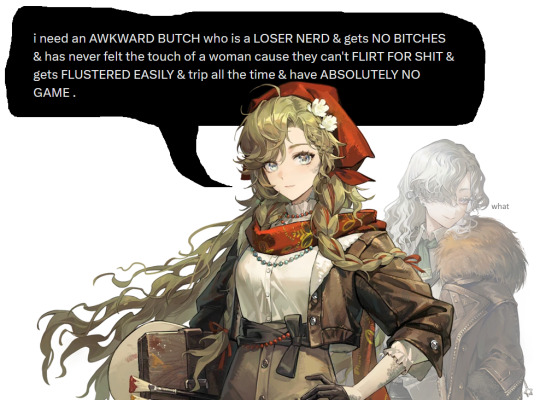
for the first time ever vila gets drunk in one of lilya's drink alongs and proceeds to say this in full earshot of. windsong who was also drinking with them
#reverse 1999#vila#windsong#r1999 shitpost#for all people make windsong a lightweight in fics i don't think that woman is a lightweight#one of the fragrances in that woman is literally 'vodka' and she has a line about drinking!! granted its about drinking only in#times of celebration so she probably doesn't drink all that much (lest we forget this woman is the struggler in her line of work)#i do still think she's a crybaby when she's drunk though. just full on sobbing at the littlest thing#we should also never forget in vila's story quest when windsong literally trips over herself going to vila and inadvertently saves herself#from being shanked by samodiva's water knives because she's clumsy as hell
185 notes
·
View notes
Text
There is also a canon Lady Midday in Pathfinder, under the name poludnica, which appeared in one of the volumes of Reign of Winter.
Samodiva

Image © Alex Petrov, accessed at his deviantArt page here
[ “Elves are wonderful. They provoke wonder. Elves are marvellous. They cause marvels. Elves are fantastic. They create fantasies. Elves are glamorous. They project glamour. Elves are enchanting. They weave enchantment. Elves are terrific. They beget terror.” –Terry Pratchett]
Samodiva CR 14 CN Fey A beautiful woman stands before you, clad in a flowing white gown woven with feathers. A palpable aura of heat emanates from her, and golden eyes burn with mischief and desire. Her feet do not touch the ground as she dances through the air.
As deadly as they are beautiful, samodivas are fey creatures that represent the life-giving and threatening properties of sunlight. If properly mollified, a samodiva can be a remarkable ally, capable of curing diseases, improving crop growth and ending droughts and floods alike. An offended or playful samodiva, however, will gladly enslave or kill the target of her attentions. Even beasts lose their wills to a samodiva’s gaze, but samodivas are unlikely to keep a charmed victim for long. Lucky captives are slaves to a samodiva’s desires for a short while before being set free; unlucky ones are killed and eaten.
Samodivas are reclusive creatures who dwell in the depths of remote forests. They are usually solitary or accompanied by loyal charmed victims. Multiple samodivas usually only gather on equinoxes and solstices in order to share news of their territories and dance in celebration of the cycles of day and night. These dances often begin at midnight and continue until the rising of the sun—the surest way to offend a samodiva is to interrupt one of these dances.
In combat, a samodiva usually seeks to use charmed allies to protect her while destroying those resistant to her gaze with magic. Samodivas are capable of assuming the form of monstrous firebirds—in this form, samodivas will often grab a lone target, fly into the air and drop them to the ground.
Samodivas have the same proportions of lithe human women, standing between five and six feet tall. All samodivas have luxurious blond hair, and rumors are common that somehow shaving a samodiva’s hair will rob her of her powers. Testing this legend would likely prove incredibly dangerous.
Keep reading
84 notes
·
View notes
Text

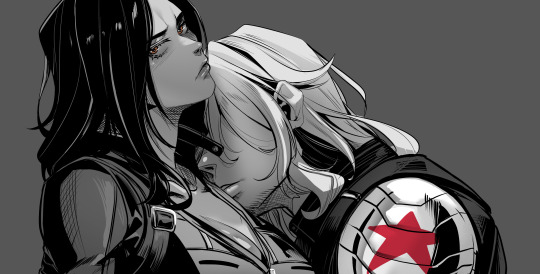
How he is with the boys VS when he’s with his girl
(enemies to lovers gang fr)
#me and my asset obsessed ass#asset au#bucky x oc#oc artwork#winter soldier#bucky barnes art#oc x canon#digital art#love my babies#oc character#mcu#bucky barnes#enemies to lovers#winter soldier x samodiva
65 notes
·
View notes
Text

FAERIE TOWN, traditional Croat name for the Roman amphitheatre in Pula (Istria). According to popular narrations of the [Istrian] peasantry, fairies from the hill of Utchka built the town in one night, but never finished it, having their work of carrying boulders from all corners of Istria interrupted by the morning crow of a rooster. The boulders that fell from the fairies' aprons can still be seen in some parts of the peninsula.
#note that divić is not the usual croat word for fairy—though it seems obviously related to bulgarian samodiva#all from proto-slavic *divŭ ofc
10 notes
·
View notes
Text
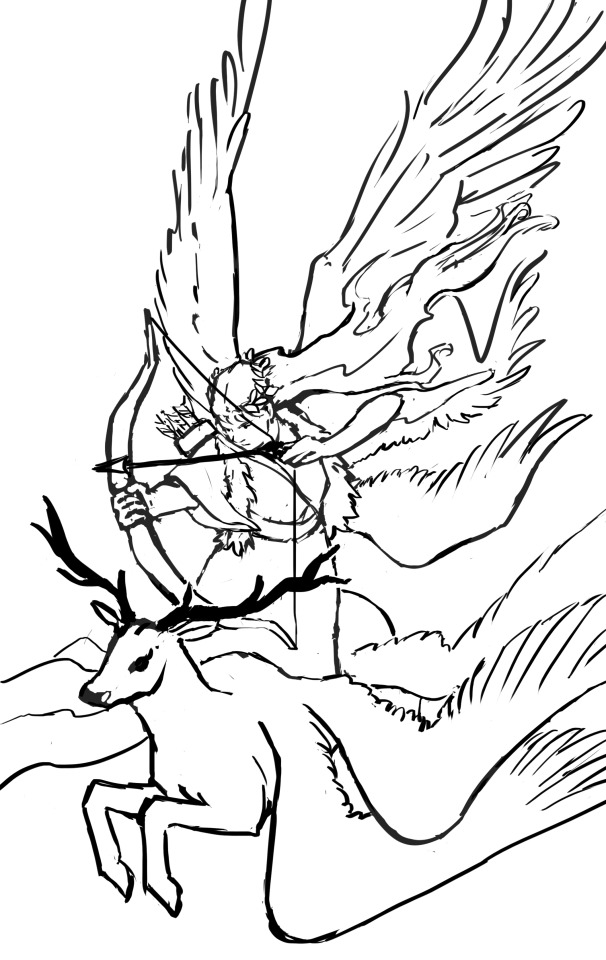
Another long time WIP and another samodiva, this time with her faithful friend. Hopefully they'll be coloured someday.
#sketch#samodiva#samodivas#самодиви#bulgarian mythology#bulgarian folklore#balkan mythology#balkan folklore#slavic mythology#slavic folklore
41 notes
·
View notes
Note
7 and 11 for the asks :)
7. Favorite actor of the year?
djsjsnns i feel like my answer is quite predictable, my love for Ding Yuxi is well known at this point 😌 and it is in fact not just looks! he does know how to act really well!
(e.g. an accurate representation of me trying to show myself i'm normal about him:)

tbf though, i haven't seen that many movies this year and the two series i've watched featured him so, you know, it was biased from the start....
11. Something you want to do again next year?
the kazakhstan trip i went on was with three other friends and we want to go on another trip like that together, time and money permitting (georgia's in sights 👀)
on a competely different end, i would love to see aurora another time! during 2025 it is still the solar maximum, but that's really not up to me ¯\_(ツ)_/¯
6 notes
·
View notes
